In this post, we’re going to take a deep dive into St. Augustine, Florida.
As the oldest still-inhabited European city in the United States, this city (founded in 1565 by the Spanish) is sure to fascinate all you history buffs, architecture aficionados, and simply inquisitive travelers out there.
I discuss its best historic sites, cultural experiences, food scene, outdoor activities, and events happening throughout the year, giving you everything you need to plan your visit.
And to help you stay connected throughout your trip, don’t forget to equip yourself with an iRoamly USA travel eSIM—it offers fast speeds and a variety of packages so you can easily share your experiences on the go.
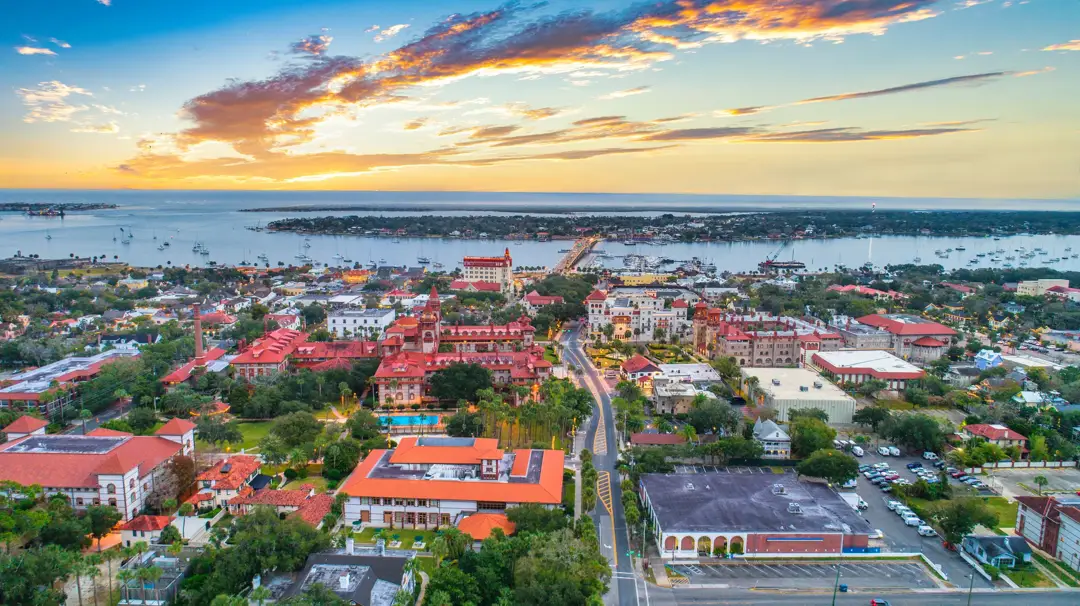
A Glimpse into the Past
This isn’t just old by American standards — it’s downright ancient.
This coastal town was founded in 1565 by the Spanish explorer Pedro Menéndez de Avilés, making it 40+ years older than Jamestown and 55 years older than Plymouth Rock. That means it predates America’s founding age by decades.
When Menéndez and his fleet landed on the coast of present-day Florida, they established what would become the first permanent European settlement in what would become the continental United States.
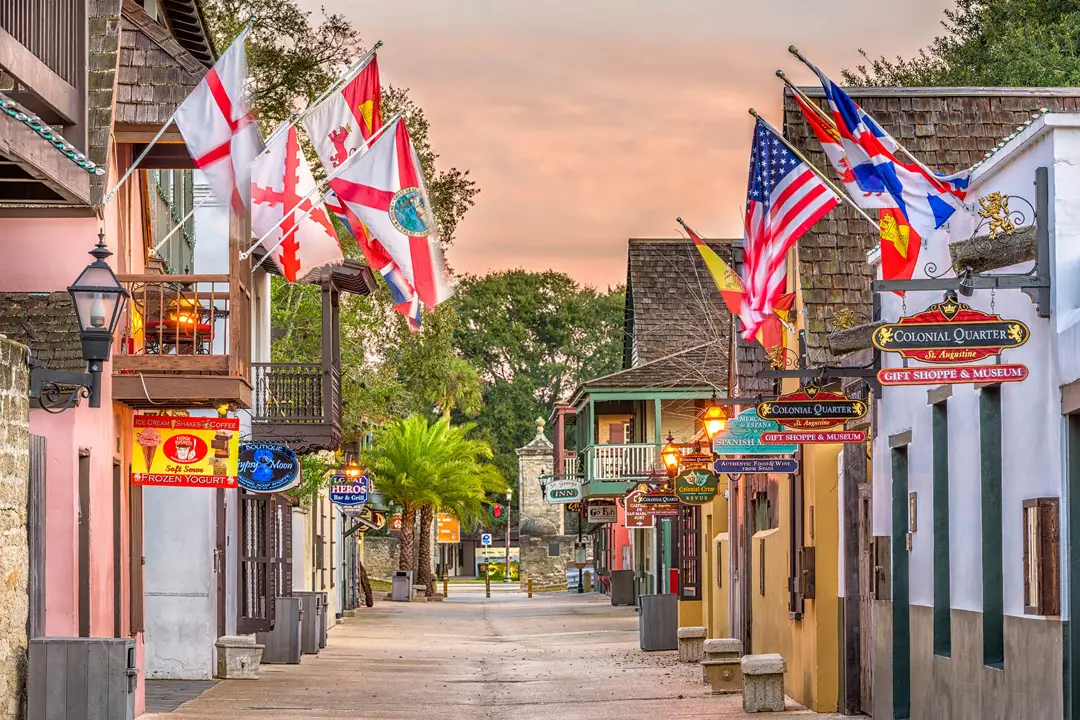
St. Augustine has been controlled by the Spanish, British, and, lastly, Americans over the centuries, and it carries architectural styles and cultural elements from all three.
The cobblestone streets, colonial homes, and centuries-old forts harken back to the city’s tumultuous and storied history.
From pirate battles and war skirmishes to peaceful colonial life and then a Gilded Age tourist hotspot, St. Augustine has featured a bit of everything.
It’s not just a city of the past — it weaves history into the very fabric of the place.
Top Historical Attractions
1. Castillo de San Marcos
A cool place to visit is Castillo de San Marcos, the oldest masonry fort in the continental U.S.
The Spanish began its construction in the late 17th century and the fortress is filled with the history of sieges and battles (and it still overlooks the Matanzas Bay).
Walk around the strong walls and take in the view while learning about the history of the region. You should dedicate around 2 hours to see this part of St. Augustine’s past.
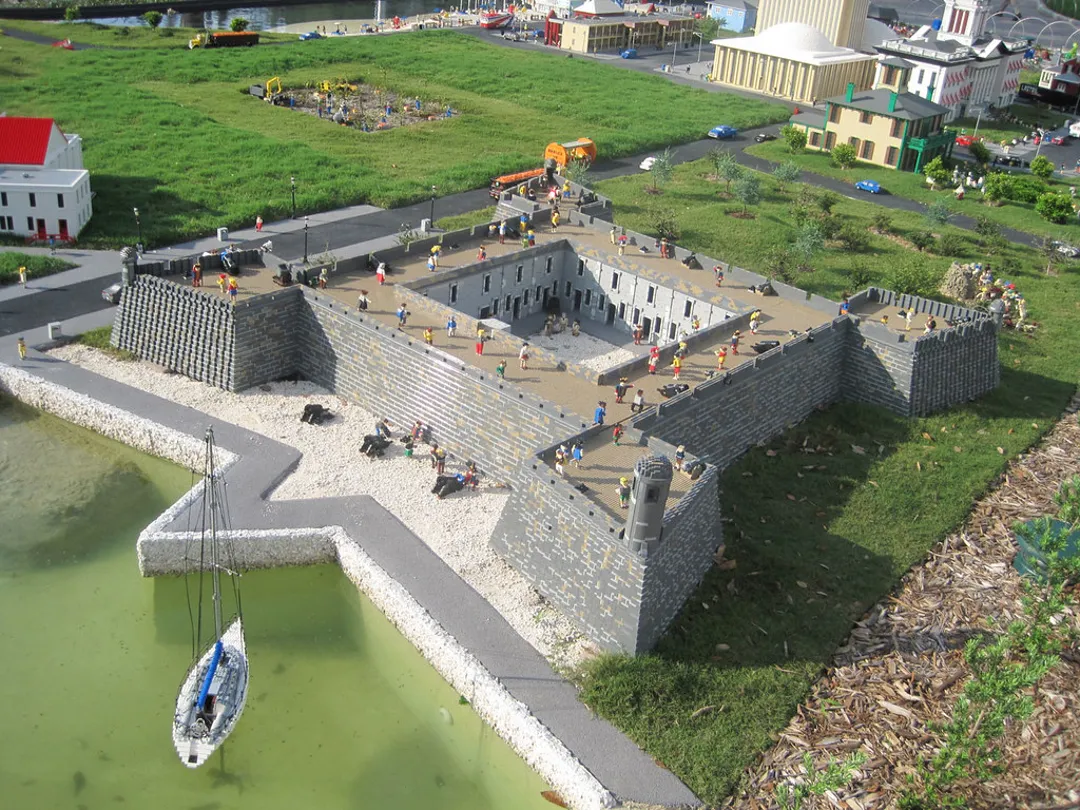
2. The Colonial Quarter
Step back in time at the Colonial Quarter, a lively living history museum right in the middle of the historic district. Here you can watch blacksmiths make horseshoes, hear some stories from yesteryear, and even attempt to fire a musket.
It’s a fun, hands-on history lesson that’s engaging and enjoyable for the whole family. Plan to spend 1-1.5 hours here.
3. Flagler College
Just imagine going to school in what used to be a fancy hotel with Gilded Age grandeur– that’s what a student’s life is like at Flagler College.
The Hotel Ponce de Leon, which is what Flagler College used to be, was built by Henry Flagler, and it’s a stunning piece of architecture with a majestic rotunda and some Tiffany stained glass.
Even if you’re not taking a tour, get a guided tour that shows off how over-the-top insane it is! Expect to spend an hour marveling at this work of art and architectural gem.
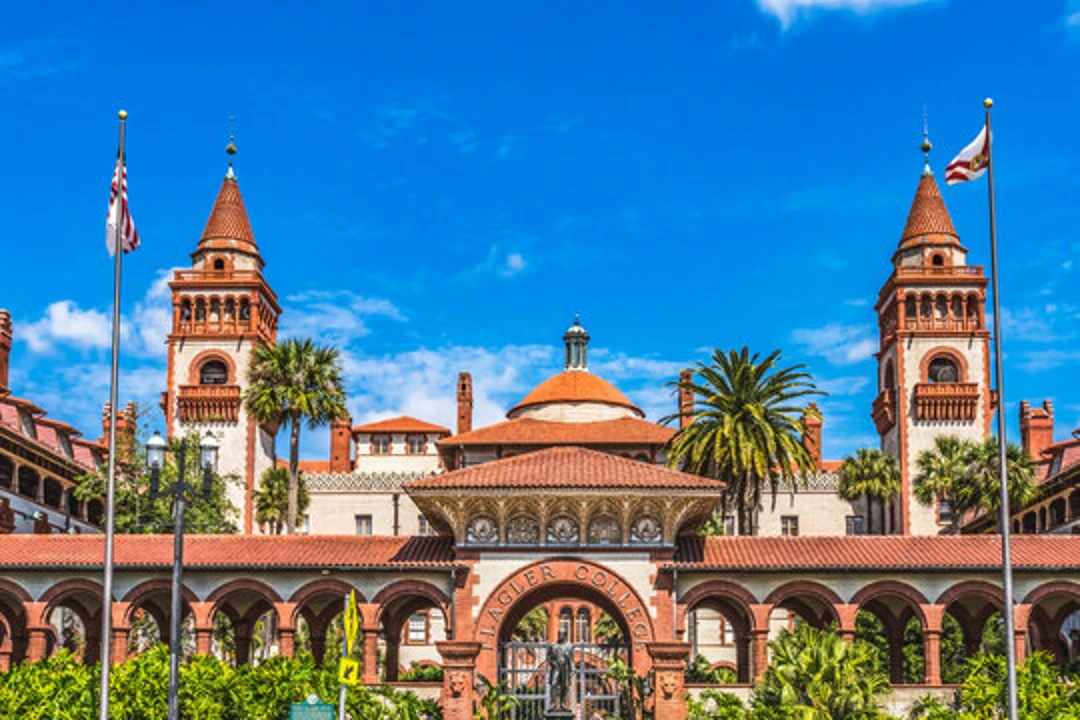
4. St. George Street
Stroll along St. George Street, a narrow walkway filled with historic structures, cute little stores, and small cafes. The whole vibe is just cool, with lots of old stuff mixing with newer cool stuff.
Spend the whole afternoon here on this one busy street. Just chill and soak it all in. This is not a place to hurry out of. It’s too cool an area.
5. Oldest Wooden Schoolhouse
Make sure to visit the Old Wooden Schoolhouse, the oldest wooden school in the United States. This very small building is an interesting look at how students were educated centuries ago.
It’s fun and educational, making it a good destination for history lovers or anyone interested in how stuff was back in the day. Take 30 minutes to explore.
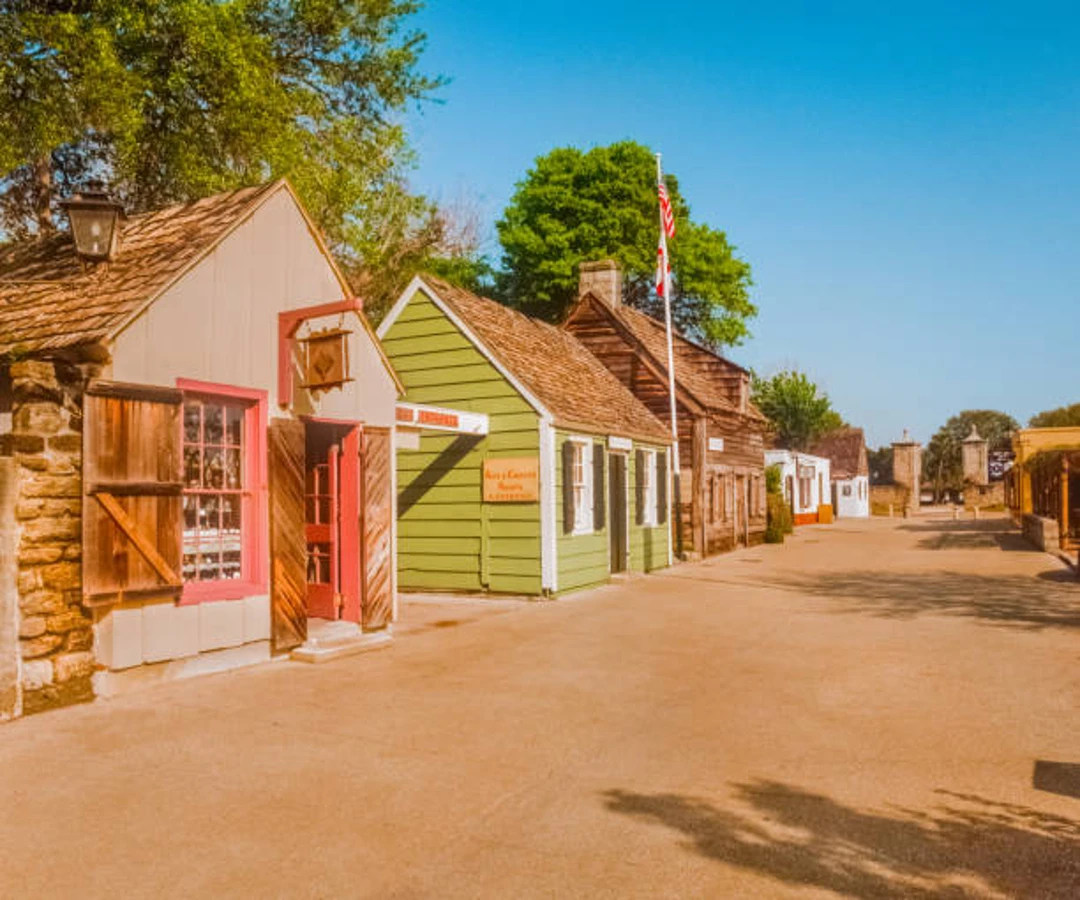
Cultural Experiences and Museums
1. Lightner Museum
Enter the world of elegance and mystery that is the Lightner Museum, located inside a historic hotel. It feels rather like walking back in time, complete with extravagant works of art, unusual artifacts, and historic knick-knacks.
The museum even contains antique furniture and odd-looking scientific equipment from the Victorian Age. Give yourself at least two hours to browse through all of the exhibits.
2. Fountain of Youth Archaeological Park
At the Fountain of Youth Archaeological Park, the actual Fountain of Youth Park, you can see where Ponce de León may (or may not) have searched for the legendary fountain.
You can walk through the gardens, listen to historical reenactments, and even try the water that supposedly contains the legendary water with life-enriching properties.
Plan to spend two hours there learning about the legend behind Ponce de León’s quest.
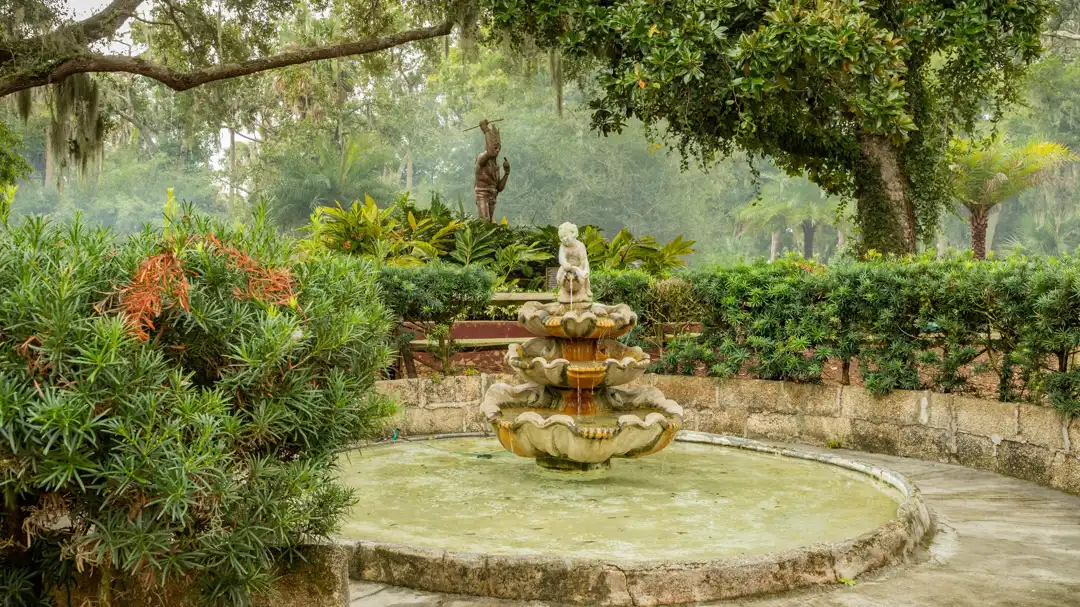
3. St. Augustine Lighthouse & Maritime Museum
Climb to see all the way around at the St. Augustine Lighthouse & Maritime Museum. It’s a history lesson and a natural wonder in one.
The lighthouse is dedicated to the region’s maritime past, specifically the shipwrecks and the people who worked in the lighthouse.
The hike is rewarding, with awesome views of the city and the rugged coastline in the distance. Plan to spend an hour and a half at this enlightening and energizing stop.
Local Food and Drink Scene
The cuisine in St. Augustine mixes the flavors brought by the Spanish with the heritage of the original Minorcan settlers and the usual beachside comforts that you expect from the South.
Though, no matter where you eat — be it in a centuries-old restaurant or on a breezy patio — this city fills your plate with history.
1. Datil Peppers
A beloved regional treat, datil peppers are sweet and spicy and feature prominently in local cooking, from hot sauces to seafood dishes. Don’t miss datil pepper shrimp or a bottle of the signature Minorcan datil pepper sauce to go.

2. Minorcan Clam Chowder
This is like no New England chowder you’ve ever tasted! A tomato-based soup that doesn’t scrimp on datil peppers, it’s a warm, thick soup that has been around since 18th-century settlers arrived.
3. Empanadas
Thanks to its Spanish heritage, St. Augustine has delicious flaky empanadas. Look for beef, chicken, or vegetable empanadas at bakeries and food stalls around the Old Town.

4. Fresh Florida Seafood
As a coastal town, St. Augustine has lots of fresh seafood. Grilled grouper, blackened mahi-mahi tacos — the Atlantic is always near your taste buds.
5. Gato Beer
This locally made craft beer is named after the city’s colonizer and filled with old-world tastes. Brewed by Old Coast Ales, it’s a great post-tour drink. Sip it in the airy taproom or a historic pub.
Outdoor Activities and Nature
1. Walks along Matanzas Bay
Walking on the sea wall by Matanzas Bay feels like you’re in another century. The glassy inlet offers a glimpse of centuries-old buildings. Watch for dolphins or pelicans, too.
Time your visit for early morning or later in the evening because it gets hot, as well as to witness all the buildings in their best light.
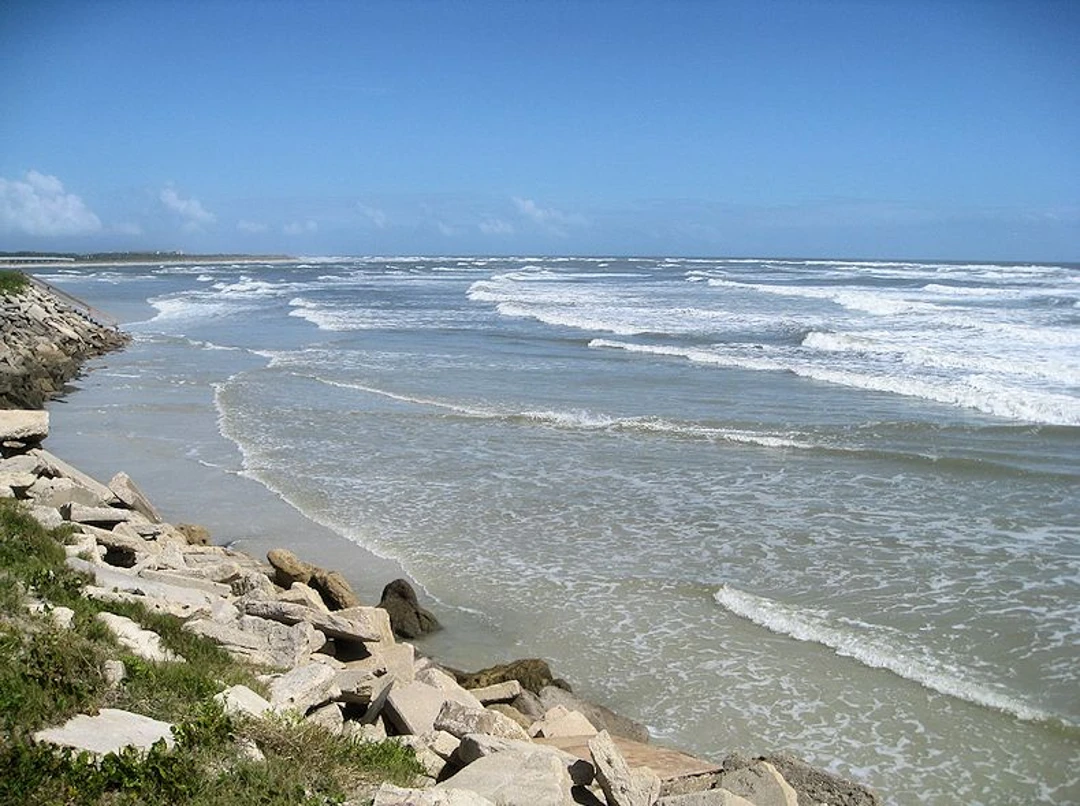
2. Relaxing at St. Augustine Beach
No trip to St. Augustine is complete without spending a day at the beach. St Augustine Beach has several miles of soft sand and calm waves, ideal for relaxing, swimming, or constructing sandcastles.
It’s a wonderful place to relax, enjoy the sea air, and get some sun. Get there early for the most relaxing experience in the morning or stick around until evening to watch the sunset spectacularly over the water.
3. Exploring Anastasia State Park
Among the many US national parks to visit, Anastasia State Park in St. Augustine is a dream destination for nature lovers.
There are miles of pristine beach, colorful tidal marshes, and abundant flora and fauna that offer tons of activities. Go hiking, bird-watching, or rent a kayak and enjoy the calm waters.
This is the best place to get outside and enjoy all the picturesque scenery — you could even spend the entire day here.
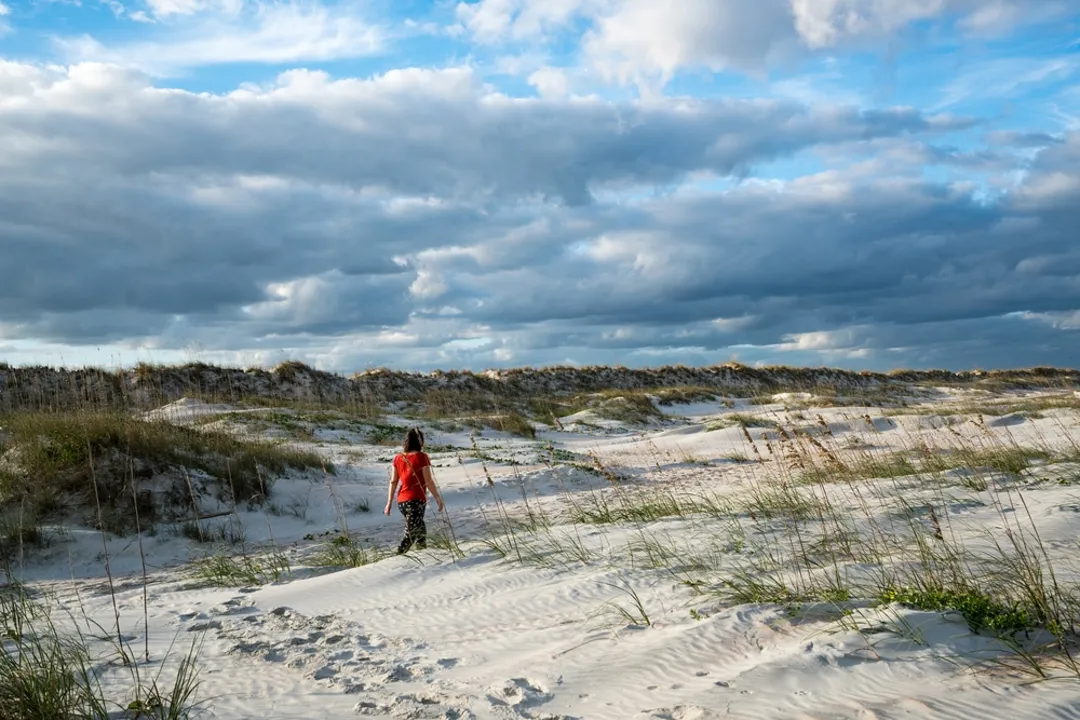
Tips for Visiting
1. Choose the Perfect Time
If you’re visiting St. Augustine, plan your visit for the spring or fall. With the mild temperatures during these months, you can escape the summer’s heat and humidity and enjoy the area in comfort.
A nice breeze with cool temperatures will make sightseeing and outdoor adventures more enjoyable, and you can make the most of your time since there will be fewer crowds.
2. Navigate with Ease
Once you’re in St. Augustine, the old town is easy to navigate on foot (it’s walkable and has many little alleys. Not a walker? Take a trolley tour!
They are a great way to see the city and learn about its history without doing the work and in less time, where the guides share a lot of information and cool facts.
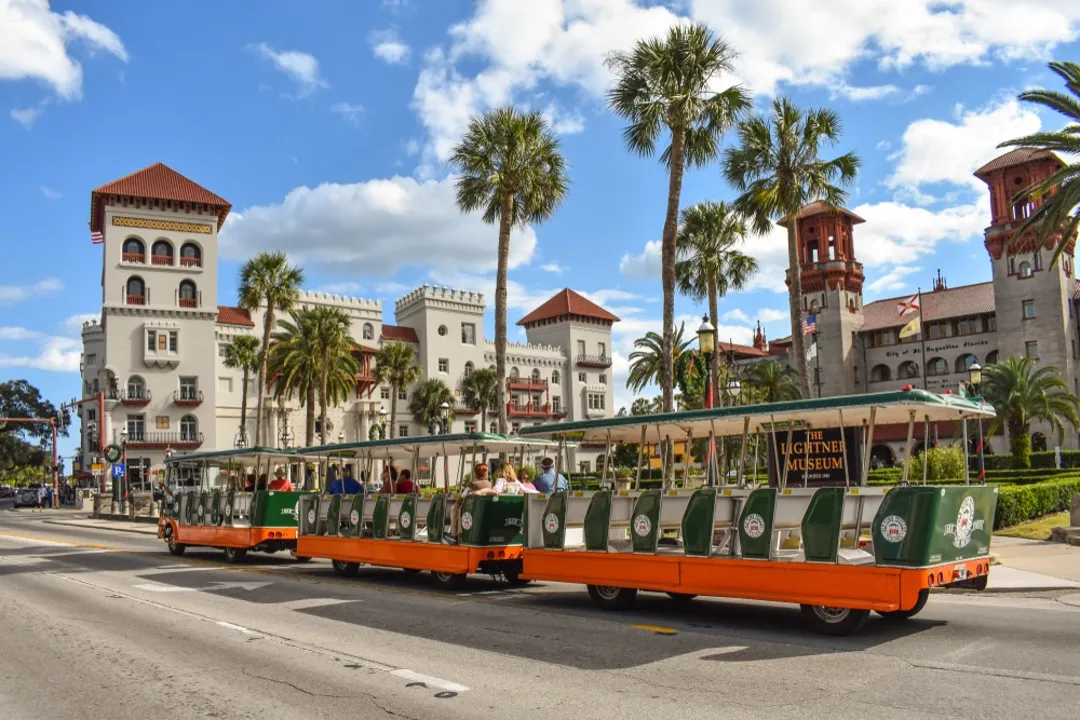
3. International Accessibility: Welcoming Visitors from Afar
St. Augustine is very friendly to international visitors and provides a lot of facilities to get around the city. While English is the lingua franca, the locals are easygoing and happy to assist if you have any questions or need directions.
Most attractions have guides and information available in several languages. You’ll definitely feel welcome as you explore this historic city, regardless of where you’re coming from.
FAQ
1. What makes St. Augustine a must-visit for history enthusiasts?
With its intact historic sites and monuments, St. Augustine provides a tangible window into several different periods, such as the age of Spanish colonization, Britain’s influence, or early American history.
2. Why is Castillo de San Marcos significant?
The oldest masonry fort in the continental U.S., Castillo de San Marcos was constructed by the Spanish in the late 1600s and embodies the city’s military past and determination.
3. What are some of the key seasonal events in St. Augustine?
Events like the Nights of Lights, the St. Augustine Celtic Music & Heritage Festival, and Living History Days attract visitors annually for their cultural celebrations.
4. Is St. Augustine accessible for international travelers?
Yes, St. Augustine welcomes international tourists. There’s plenty of English here and people are friendly. Most attractions provide information in various languages, so a visit here will be a good one.
Conclusion
St. Augustine blends rich history and quirky charm with a dash of adventure.
It offers a unique experience for everyone who goes there, with old forts, good food, and a vibe that makes you feel like you’re in a place where history is still very much on the scene.
It’s a city that captures your mind and heart and should never be left off any US itinerary. As you walk around and soak up the stories, you’ll be able to weave yourself into the fabric and history of this one-of-a kind place.
